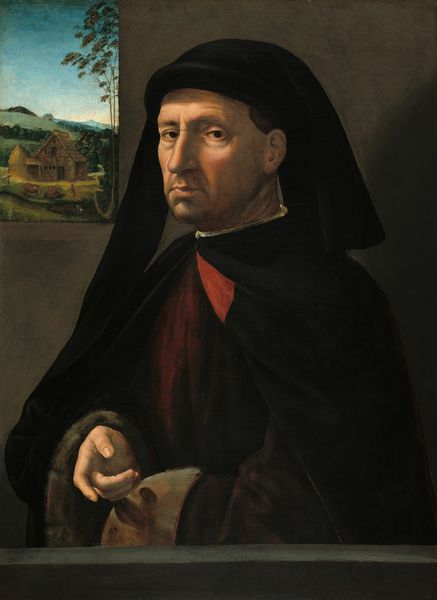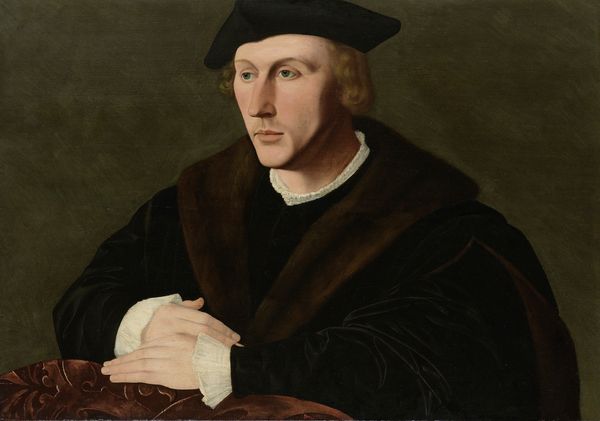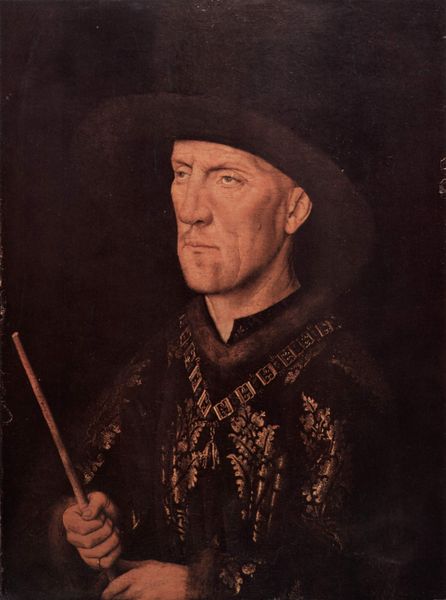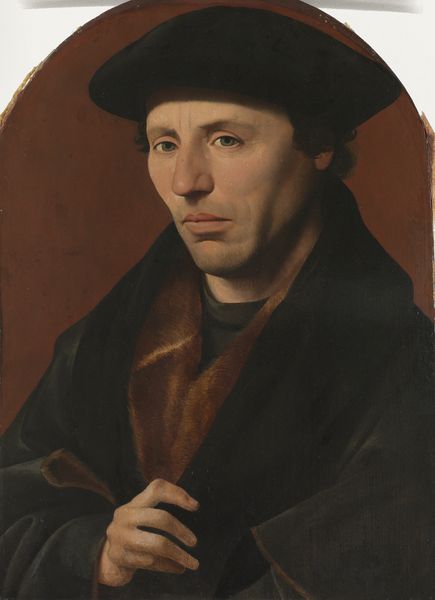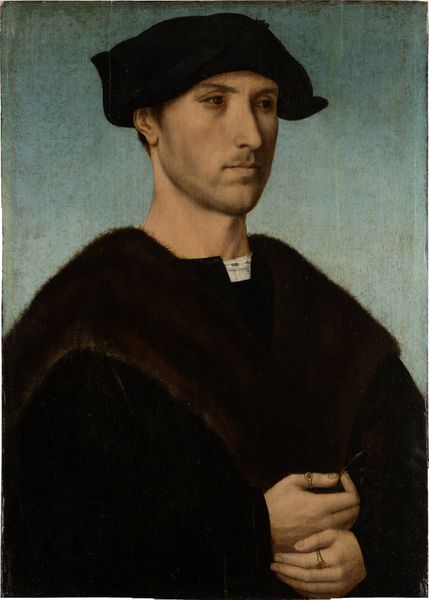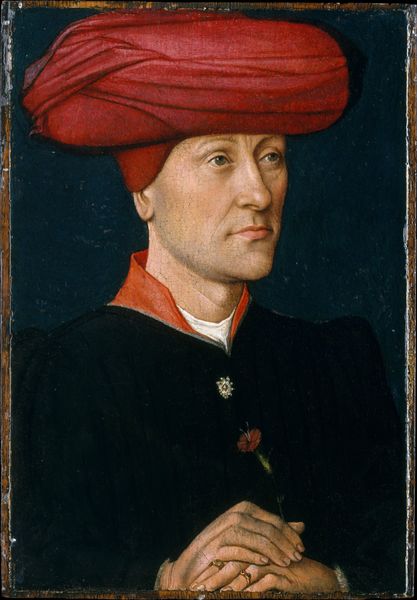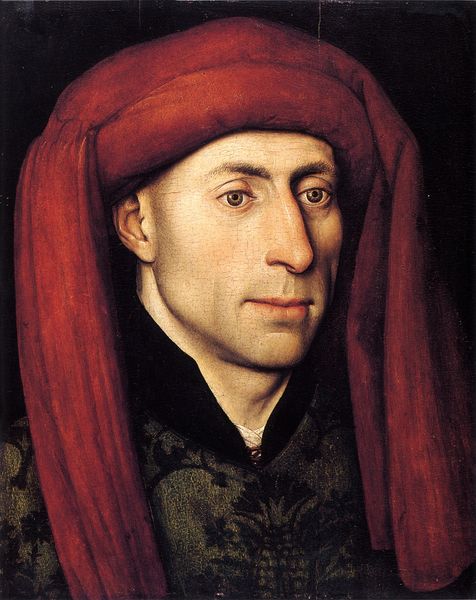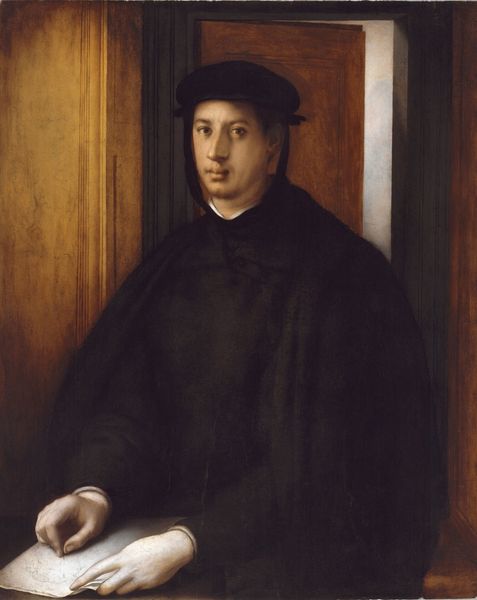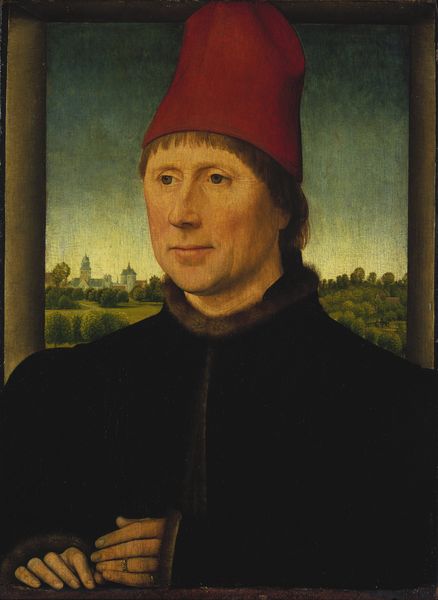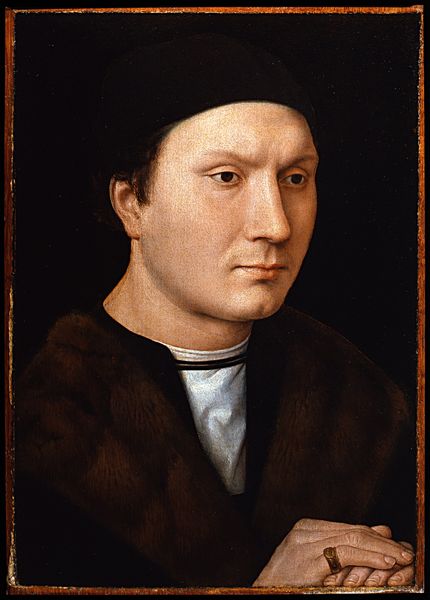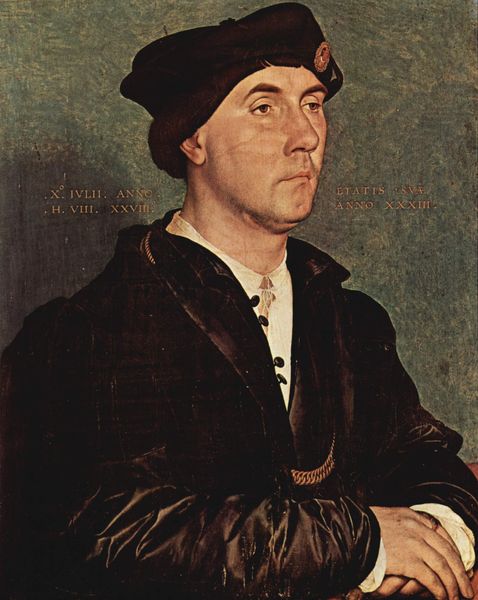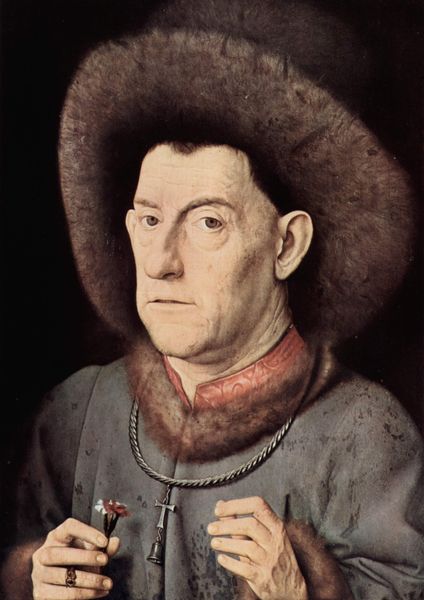
oil-paint
#
portrait
#
head
#
face
#
portrait
#
oil-paint
#
figuration
#
portrait reference
#
famous-people
#
male-portraits
#
portrait head and shoulder
#
animal portrait
#
human
#
animal drawing portrait
#
portrait drawing
#
history-painting
#
facial portrait
#
northern-renaissance
#
early-renaissance
#
portrait art
#
fine art portrait
#
realism
#
digital portrait
Dimensions: 24.5 x 19 cm
Copyright: Public domain
Curator: Look at the meticulous detail in Jan van Eyck's "Portrait of Jan de Leeuw," created in 1436 and currently housed in the Kunsthistorisches Museum in Vienna. Editor: Striking! The direct gaze and tightly pursed lips project such intense concentration. The man’s hand holding an object looks strangely isolated in the dimness, making it central to our reading. Curator: That object, probably some tool of the goldsmith's trade, speaks to Jan de Leeuw's profession and social status. The controlled lighting directs all attention towards his face. Van Eyck, always the master of symbolism, invites a profound psychological reading. The almost photographic detail seems to announce that we are in the presence of a tangible person from Bruges in 1436, yet… Editor: Yet there’s a rigidity that transcends mere physical likeness. This wasn't simply capturing an individual but portraying an idealized type. Early portraits often did that, presenting men as sober, accomplished figures. This portrait conveys an overwhelming sense of responsibility. Does he feel that weight? Did the artist mean him to? Curator: The Northern Renaissance artists sought that balance, reflecting a world newly awake to the individual yet still tethered to tradition. Consider the layers upon layers of meaning inherent in what seems at first viewing an ordinary face, his face; yet, in reality is also our collective face and human history reflected in him. Editor: Yes, the psychological depth here is quite interesting when we look into his eyes that speak volumes beyond just what they behold. What do you make of how portraits like these were used politically, I wonder? Did they serve simply as displays of personal virtue, or did the serve wider community roles of presenting good role models for Bruges and wider states? Curator: Portraits played multiple roles then, from solidifying power to declaring identities. It’s tempting to see De Leeuw as emblematic of Bruges’ burgeoning merchant class. Van Eyck was adept in negotiating and embedding political messaging and the spirit of new ages into his creations, that we can now re-negotiate for new present eras. Editor: Understanding its visual vocabulary definitely expands one’s viewing experience, even after many looks! The symbolic force remains timeless, revealing new things about social forces through the passing eras. Curator: Indeed, it becomes a rich conversation through images!
Comments
No comments
Be the first to comment and join the conversation on the ultimate creative platform.
